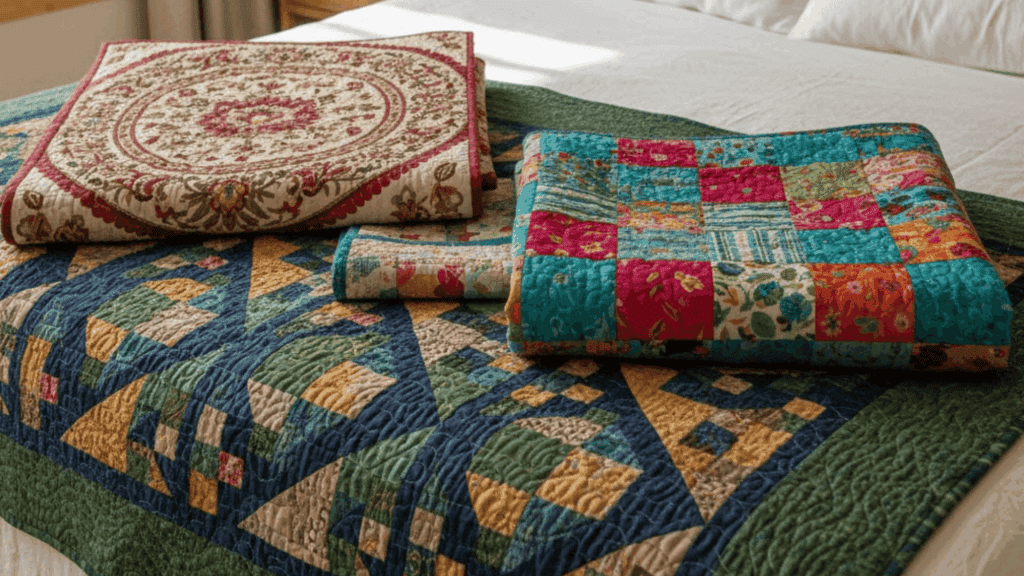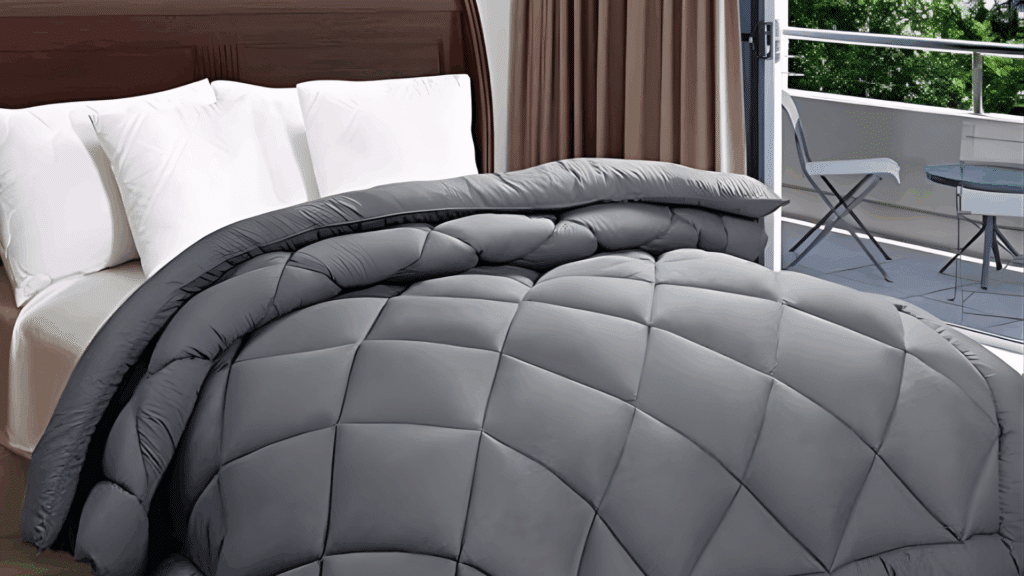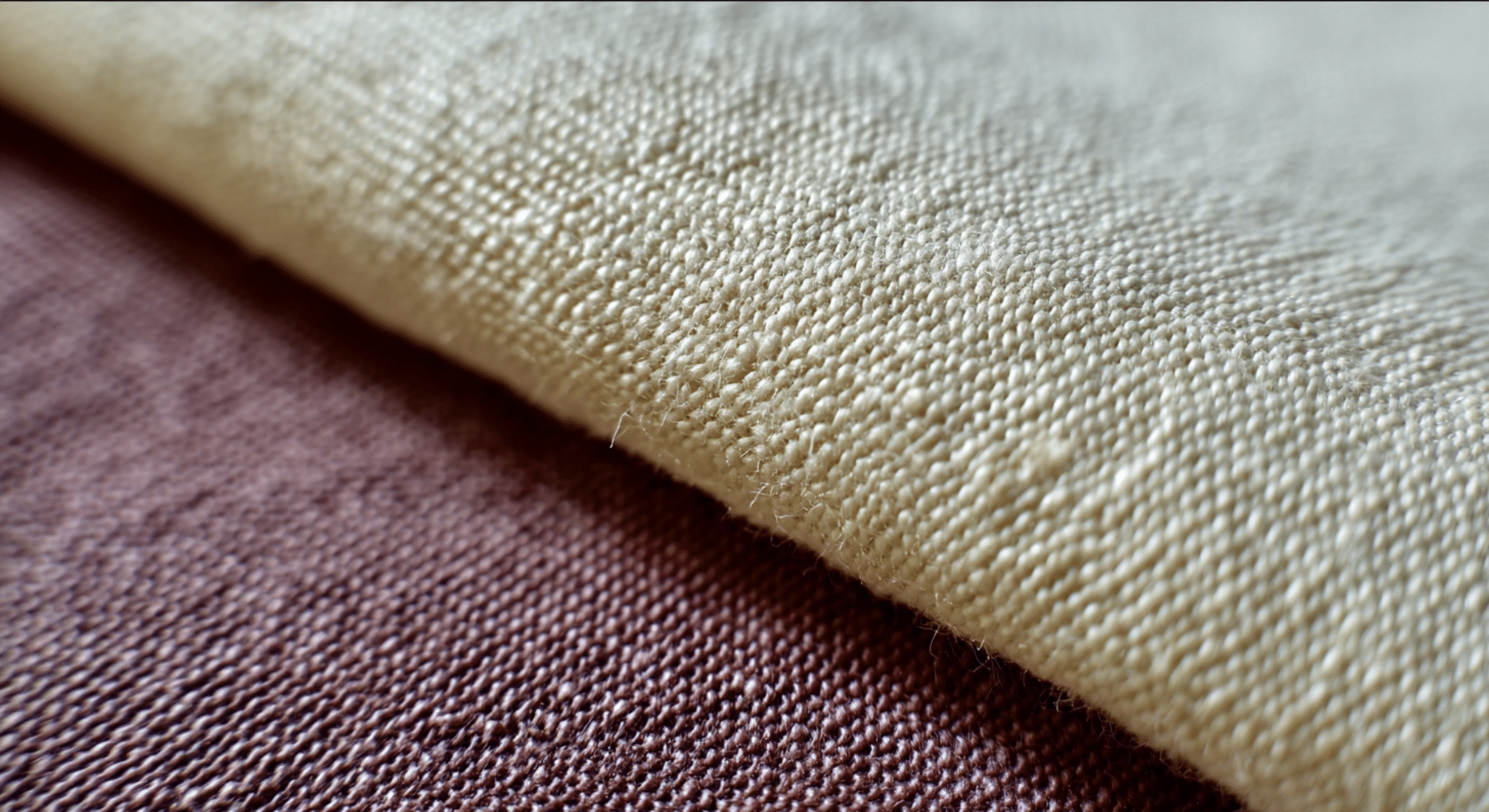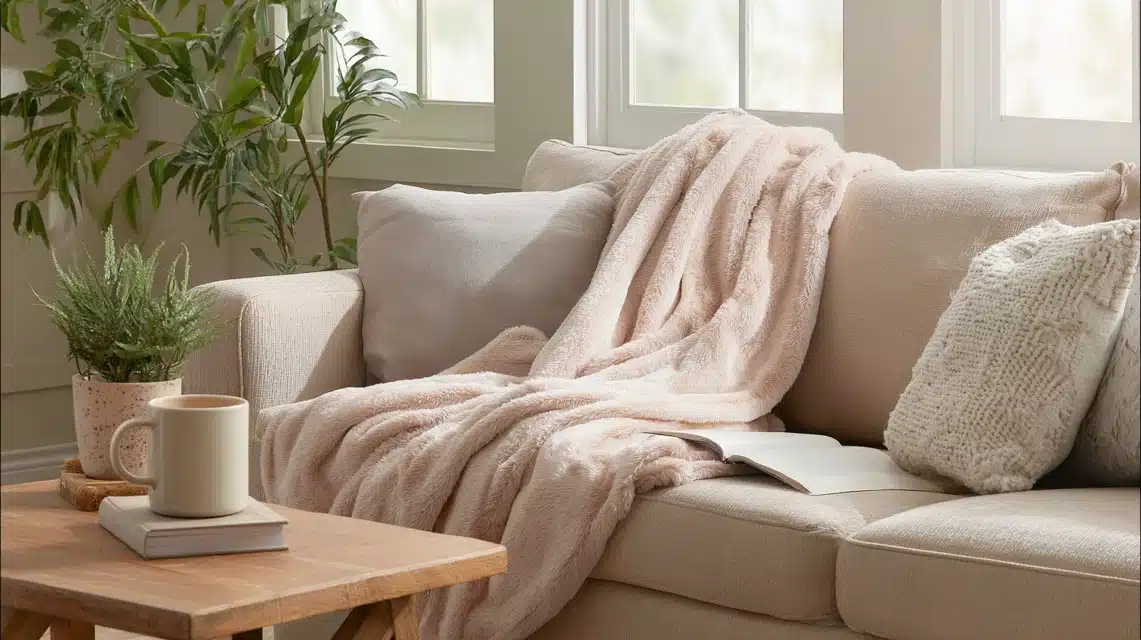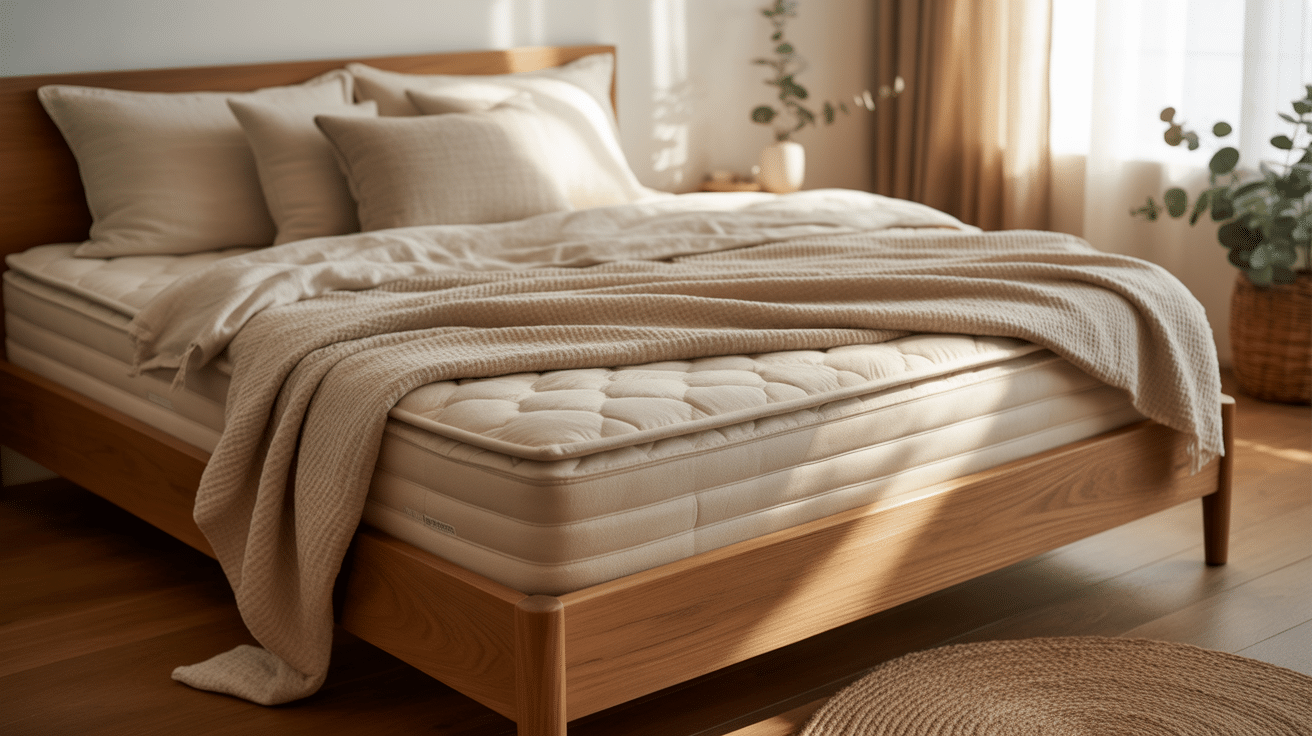I used to think all soft fabrics felt the same, until I noticed that some kept me cool while others made me sweat. That’s when I started paying attention to what they were made of.
Looking into viscose vs. cotton helped me understand why some clothes last longer, feel better, or need extra care. It wasn’t just about texture; it was about how each fabric fits into daily life.
Now, if you’re trying to figure out which fabric works best for you, this guide will break it down simply.
You’ll learn how each one is made, how they feel, how they handle sweat and heat, and what they mean for your skin, budget, and laundry routine.
How Fabric Changes the Way Clothes Feel and Work
When you buy clothes, the fabric might not be the first thing you think about. But it should be. Fabric decides how soft or rough your clothes feel, how long they last, and how your skin reacts to them.
Some materials feel light and smooth. Others can feel stiff or itchy. Your comfort really depends on what the fabric is made of.
Think about hot summer days. Some fabrics trap heat and make you sweat more. Others let your skin breathe and help you stay cool.
In winter, you want clothes that keep the cold out. Picking the right fabric helps you stay warm without feeling too heavy.
Also, fabric affects your money. Clothes made from stronger materials last longer, so you don’t have to keep buying new ones.
Plus, some fabrics are better for the Earth because they need less water and chemicals. That means you’re helping your skin, wallet, and the planet, all by choosing the right fabric.
Viscose vs. Cotton: Understanding the Basics
When shopping for clothes, you might notice tags that say “100% cotton” or “viscose.” These words can be confusing if you don’t know what they mean.
Even though both fabrics feel soft and smooth, they come from different sources and are made in very different ways. Knowing what they are made of, how they’re made, and how they behave can help you make better choices about comfort, cost, and care.
What is Cotton?

Cotton is a natural fabric derived from a plant.
It grows as a soft, fluffy ball around the seeds of the cotton plant. After farmers pick the cotton, it’s cleaned and the fibers are spun into thread. That thread is then used to make fabric.
Since cotton comes from nature, it’s gentle on most skin types. It’s soft, breathable, and sweat-absorbing, making it perfect for warm weather.
Cotton clothes usually feel light and cozy and don’t trap heat. That’s why T-shirts, underwear, and bed sheets are often made from cotton.
Cotton also lasts a long time if you take care of it. It can handle many washes without falling apart.
But not all cotton is the same. Some types use more water to grow, and some may wear out faster if the quality is low.
What is Viscose?

Viscose is a semi-synthetic fabric. That means it starts from something natural, like trees, but then goes through a long chemical process before becoming fabric.
Viscose is made from wood pulp, which usually comes from trees like beech, pine, or bamboo. The pulp is broken down and turned into a thick liquid. Then, it’s pushed through tiny holes to form thin threads, which are spun into fabric.
Even though it’s made from trees, viscose isn’t fully natural because of all the steps and chemicals needed to turn it into something you can wear. That’s why it’s called “semi-synthetic.”
It belongs to a group of fabrics called rayon. You might see both names: viscose and rayon, used in clothing labels, and they usually mean the same thing.
Viscose feels smooth, soft, and silky.
However, viscose is not as strong as cotton, especially when it gets wet. It can wrinkle easily, and if not handled carefully, it may shrink or lose shape after washing. Some viscose fabrics also need dry cleaning.
Cotton comes from nature; viscose is created from it.
Key Differences Between Viscose and Cotton
Now that you know what cotton and viscose are, let’s look at how they compare. This chart will help you decide which fabric is better for your skin, the weather, and the planet:
| Feature | Cotton | Viscose |
|---|---|---|
| Origin and Composition | Natural, comes from the cotton plant | Semi-synthetic, made from processed wood pulp |
| Feel and Texture | Soft, fluffy, and breathable | Smooth, silky, and hangs nicely |
| Breathability | Very breathable, lets air move through | Some breathability, but holds more heat |
| Moisture Absorption | Soaks up sweat well, great for hot weather | Absorbs moisture, can feel damp |
| Durability | Strong, lasts through many washes | Weaker when wet, may lose shape or shrink |
| Care Difficulty | Easy to wash and dry | Needs gentle care, sometimes dry cleaning |
| Cost Range | Often affordable, depending on quality | Can be low to mid-priced, depending on the brand |
| Environmental Impact | Natural and breaks down over time, but needs a lot of water | Starts from trees but uses strong chemicals during making |
This simple chart can help you make smarter fabric choices based on what matters most to you.
Comfort and Breathability: Which Feels Better to Wear?

When it comes to staying cool and comfortable, fabric really matters. Cotton is one of the best choices for hot weather.
It soaks up sweat and lets air pass through, which keeps your skin dry and cool. This makes cotton ideal for summer days or warm-weather places.
Viscose feels smooth and soft, almost like silk. It hangs nicely on your body and feels light to wear. But it doesn’t absorb moisture as well as cotton and can feel damp in very humid weather.
It does let some air through, just not as much as cotton.
Now, if you’re comparing bamboo viscose vs. cotton, bamboo viscose stands out as a soft, breathable choice.
It feels smoother than regular cotton but still lets air through.
This makes it a good option if you want something soft but also comfortable in warm weather.
Which Fabric Lasts Longer?
Cotton is strong and can handle a lot of wear. It keeps its shape after many washes and doesn’t tear easily. You can wash it in a machine, and it still holds up well over time. Just be careful with hot water, since cotton can shrink if it’s not washed the right way.
Viscose doesn’t last as long. It becomes weaker when wet, which makes it more likely to stretch, shrink, or lose shape. It usually needs gentle washing or even dry cleaning.
Bamboo viscose is better than regular viscose when it comes to strength. It holds up better in the wash and doesn’t wear out as quickly. If you want something soft but stronger than regular viscose, bamboo viscose is a better choice.
Which Fabric is Better for the Environment?
Cotton is natural and breaks down over time, but growing it uses a lot of water, land, and chemicals. This can harm the soil and nearby water. On the other hand, viscose is made from trees, which sounds good, but it takes strong chemicals to turn wood into fabric. This can cause pollution if not handled the right way.
Bamboo viscose vs cotton is a closer match. Bamboo grows fast with less water and no need for harmful sprays. That makes bamboo viscose a better pick if you want something soft, comfy, and more Earth-friendly.
Pros and Cons of Cotton and Viscose
Both cotton and viscose have their strengths and weaknesses. The table below makes it easy to see what each fabric is good at and where it falls short:
| Fabric | Pros | Cons |
|---|---|---|
| Cotton | Natural and soft on the skin | Uses a lot of water to grow |
| Breathes well and absorbs sweat | It can shrink if not washed right | |
| Easy to wash and care for | Wrinkles easily | |
| Long-lasting if made well | Some cotton can feel rough if it’s of low quality | |
| Viscose | Feels smooth and soft like silk | Weaker when wet, may lose shape |
| Drapes nicely and looks dressy | Needs gentle care and may need dry cleaning | |
| Absorbs moisture and feels cool on the skin | Made with chemicals that may bother sensitive skin | |
| Made from wood pulp, not plastic | Not as durable as cotton |
As you can see, each fabric works better in some areas than others. What’s best for you depends on how you plan to wear it and what matters most to you: comfort, care, or cost.
Cost and Value for Money
Viscose is usually cheaper than cotton because it’s faster and cheaper to make. But it may not last as long, especially if washed often.
Cotton often costs more at first, but it’s strong and can stay in good shape for years, making it worth the price over time.
When comparing bamboo viscose vs. cotton, bamboo viscose sits in the middle. It’s softer than cotton and more breathable than regular viscose.
It also lasts longer than standard viscose. If you’re looking for comfort, softness, and fair value, bamboo viscose can be a smart choice.
Best Ways to Use Each Fabric
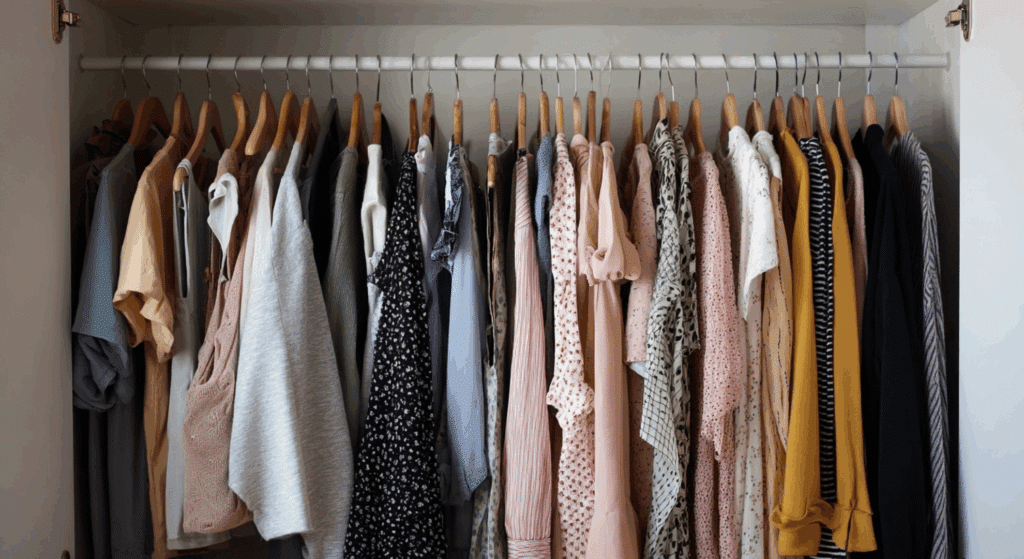
Each fabric has its own strengths, so knowing when to use cotton, viscose, or bamboo viscose can help you get the most comfort, value, and style. Here’s how they work best in daily life:
- Cotton is perfect for T-shirts, jeans, baby clothes, socks, and bedding. It’s strong, easy to clean, and great for hot weather.
- Viscose works well for flowy dresses, skirts, light tops, and scarves. It feels soft and smooth, making it ideal for dressy or relaxed outfits.
- Bamboo viscose is great for sleepwear, underwear, and soft layers. It’s gentle on the skin and more breathable than regular viscose.
When comparing bamboo viscose to cotton, both offer comfort in different ways.
Cotton is better for long-lasting daily wear. Bamboo viscose feels smoother and is kinder to sensitive skin. Picking the right fabric depends on what you need: softness, strength, or something in between.
Cotton-Viscose Blends: The Best of Both Worlds?
Some clothes are made from a mix of cotton and viscose. These blends try to bring together the best parts of both fabrics.
Cotton adds strength, breathability, and the ability to soak up sweat. Viscose brings softness, smooth texture, and a nicer drape.
This mix can make the fabric feel soft like viscose but still hold up better in the wash, thanks to the cotton. It’s often used in shirts, dresses, and everyday wear that needs to be both comfy and a little stylish.
These blends are also usually lighter than full cotton and easier to care for than pure viscose.
If you’re looking for something soft but not too delicate, a cotton-viscose blend could be a smart pick. It’s a middle ground that gives comfort, a good fit, and ease of use. Just check the label for the fabric mix so you know what you’re getting before you buy.
Maintenance and Care
Taking care of your clothes the right way helps them last longer. Cotton and viscose need different care, so always check the label before washing. Here are some general tips:
- Wash cotton in cold or warm water to avoid shrinking.
- Use a mild detergent for both fabrics to protect the fibers.
- Wash viscose on a gentle cycle or hand wash to prevent damage.
- Avoid wringing out viscose, as it can stretch or lose shape.
- Air-dry both fabrics instead of using a hot dryer.
- Iron cotton on medium heat, but use low heat for viscose.
- Store clothes in a cool, dry place to avoid mold or fading.
Proper care keeps your clothes soft, fresh, and ready to wear for longer.
Conclusion
Learning about fabrics changed how I shop and wear clothes. Once I understood the small but important differences between viscose vs. cotton, I stopped guessing and started choosing what actually works for me.
It helped me avoid clothes that wear out fast or feel wrong in the heat.
Now it’s your turn. Think about how you dress, how much care you want to give your clothes, and what feels best on your skin. The right fabric can make everyday life more comfortable.
Don’t just go by the look, go by the feel and fit.
If this helped, take a minute to see more blogs on the website. There’s more simple, honest info waiting to help you make smarter choices!




